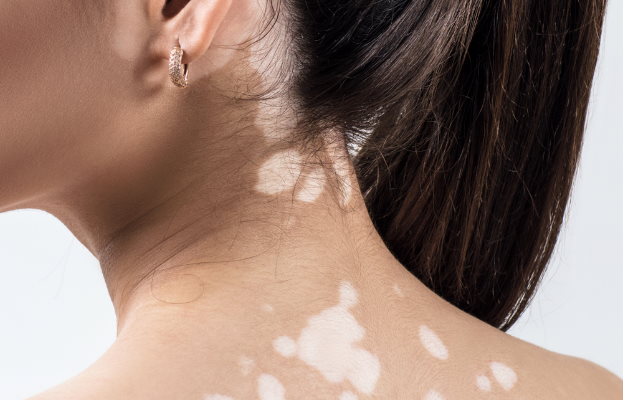What is vitiligo?
Vitiligo (Leucoderma) is a genetic condition wherein the skin loses its pigment melanin and turns white. It is not a contagious condition. Vitiligo can be localized to few sites on the body or generalized where it can cover wider areas all over the body. There is a universal type which is rare, in which melanin disappears from the entire body. Globally, vitiligo affects 1%-4% of the population.
What are its main signs and symptoms?
The signs and symptoms include:
It is also observed that other parts are affected such as the hair colour of the scalp, eyelashes and eyebrows, and beard in males. It can also affect the colour of other parts of the body such as eyes and lips.
What are the main causes?
Mostly, it is acquired but sometimes it can have a genetic origin. There are also unrecognised environmental factors that can trigger such a response from the skin. There are about 25%-30% chances of having a relative with vitiligo and 6% among brothers or sisters within the family. It is mostly seen in people with autoimmune disorders and may pass to their offspring as well.
How is it diagnosed and treated?
Your physician will analyse the condition by physically examining the patch and may ask about your symptoms. Your family or past history may be asked. Laboratory tests may be carried out like:
- Complete blood count
- Thyroid tests
- Antibody tests to look for other autoimmune conditions
- Folate or vitamin B12 test
- Vitamin D levels
Treatment methods include certain medications, phototherapy and surgical interventions. Micropigmentation may be done to match the patch colour with the person’s skin colour. It is advisable to use skin protectants especially sunscreens. Depression may occur in some patients due to lowered self-esteem. Proper counselling and support groups may help overcome stress and depressive episodes.

 Doctors for Vitiligo (Leucoderma)
Doctors for Vitiligo (Leucoderma)  OTC Medicines for Vitiligo (Leucoderma)
OTC Medicines for Vitiligo (Leucoderma)
 Vitiligo (Leucoderma) articles
Vitiligo (Leucoderma) articles

 Home Remedies for Vitiligo (Leucoderma)
Home Remedies for Vitiligo (Leucoderma)






 Editorial Team
Editorial Team

 Dt. Akanksha Mishra
Dt. Akanksha Mishra

 Dr. Apratim Goel
Dr. Apratim Goel











